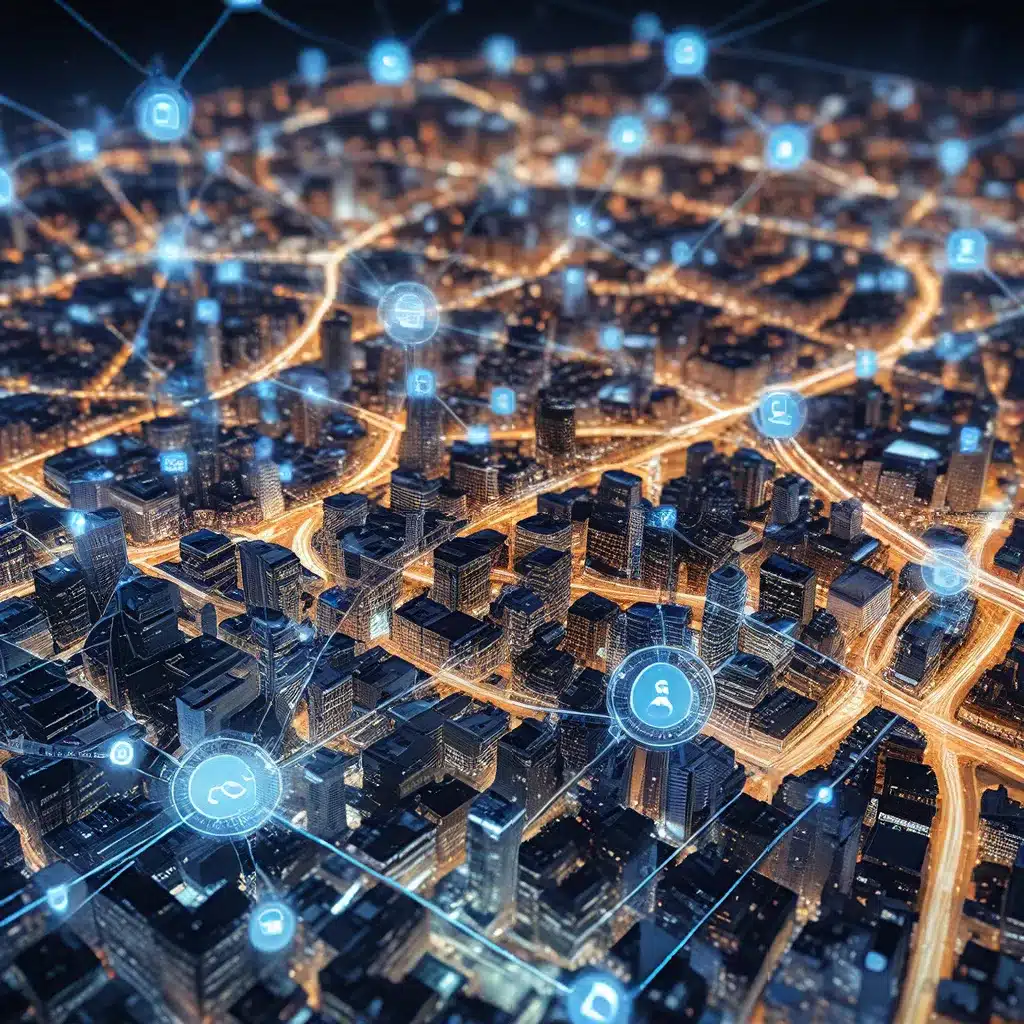
In the rapidly evolving realm of the Internet of Things (IoT), the ability to collect, analyze, and visualize sensor data has become a cornerstone of innovation and transformation. As the world becomes increasingly interconnected, sensor networks and the rich data they generate have emerged as powerful tools for driving business intelligence, enhancing operational efficiency, and unlocking new possibilities across a wide range of industries.
Harnessing the Power of IoT Data
The IoT ecosystem is a veritable treasure trove of data, with millions of smart devices and sensors continuously capturing real-time information about the physical world. From environmental conditions and asset performance to human behaviors and market trends, this deluge of machine-generated data presents both challenges and opportunities for organizations seeking to harness its potential.
IoT provides the infrastructure for collecting and transmitting data, while data analytics is the engine that drives value from that data. By leveraging advanced analytical techniques, organizations can uncover hidden patterns, predict future outcomes, and make data-driven decisions that give them a competitive edge.
Descriptive analytics helps organizations understand what has happened in the past, predictive analytics enables them to anticipate what might happen, and prescriptive analytics provides recommendations on what should be done. Together, these analytical approaches empower businesses to make informed, proactive, and strategic choices that drive innovation and growth.
Transforming Industries with Sensor Data Analytics
The impact of sensor data analytics is being felt across a wide range of industries, each with its unique challenges and opportunities.
Consumer IoT (CIoT)
In the consumer realm, connected devices and smart home technologies are revolutionizing the way we live. From smart speakers and wearable fitness trackers to connected home appliances and security cameras, CIoT is enhancing convenience, comfort, and efficiency in our daily lives. By analyzing data from these IoT devices, organizations can gain valuable insights into consumer behavior, preferences, and pain points, enabling them to deliver personalized experiences and tailor their offerings to meet evolving customer needs.
Industrial IoT (IIoT)
In the industrial sector, IoT-enabled sensors, devices, and machines are transforming business operations and driving operational efficiency. IIoT enables predictive maintenance, real-time asset tracking, remote monitoring, and other advanced capabilities that optimize processes, reduce costs, and enhance productivity in industries like manufacturing, energy, agriculture, and healthcare. By harnessing the power of sensor data analytics, industrial organizations can make more informed decisions, anticipate potential issues, and continuously improve their processes.
Healthcare IoT (HIoT)
In the healthcare domain, IoT-powered devices and systems are revolutionizing patient care and improving medical outcomes. From wearable health monitors and smart medical devices to remote patient monitoring and telemedicine platforms, HIoT enables healthcare providers to deliver personalized, proactive, and remote care, leading to better health outcomes and enhanced patient experiences. By analyzing data from these connected healthcare systems, medical professionals can identify trends, predict potential health issues, and make more informed, data-driven decisions to improve patient care.
Driving Business Intelligence with Sensor Analytics
At the heart of data-driven decision-making lies business intelligence (BI), which integrates and analyzes data from various sources, including IoT sensor networks, to provide actionable insights. BI tools leverage advanced analytics techniques to uncover trends, patterns, and opportunities hidden within the data, empowering organizations to monitor performance, evaluate KPIs, and develop strategies that align with their goals.
By centralizing data from IoT devices and other enterprise systems into a unified data warehouse or repository, BI enables organizations to view their business operations and performance comprehensively. This data integration process involves cleansing, transforming, and harmonizing data to ensure consistency and accuracy, creating a single source of truth for informed decision-making.
Interactive dashboards, reports, and data visualization tools powered by BI provide users with intuitive and engaging ways to explore data, identify insights, and communicate findings effectively. From real-time monitoring of critical metrics to predictive modeling and prescriptive recommendations, BI empowers organizations to stay agile, responsive, and ahead of the curve in an increasingly competitive landscape.
Securing the IoT Ecosystem
As the IoT ecosystem continues to expand, the importance of security cannot be overstated. With millions of connected devices transmitting sensitive data, organizations must prioritize the protection of their IoT infrastructure to safeguard against cyber threats, data breaches, and other security vulnerabilities.
Furthermore, the energy consumption of IoT devices and sensor networks is a critical consideration, as it can impact the overall efficiency and sustainability of the ecosystem. Energy-efficient design, power management strategies, and the integration of renewable energy sources are crucial for optimizing the performance and longevity of IoT systems, reducing their environmental impact, and enhancing their scalability.
Embracing the Future of Sensor Networks and IoT
As the Internet of Things continues to evolve, the role of sensor data analytics and visualization in driving innovation and transformation will only become more pivotal. By harnessing the power of IoT data, organizations can unlock a wealth of insights, make more informed decisions, and stay ahead of the curve in their respective industries.
Whether it’s enhancing consumer experiences, optimizing industrial operations, or improving healthcare outcomes, the integration of sensor networks and advanced analytics is paving the way for a future where the physical and digital worlds are seamlessly connected, empowering us to create smarter, more efficient, and more sustainable solutions.
As the sensor networks and IoT landscape continues to evolve, organizations must stay attuned to the latest trends, technologies, and best practices to harness the full potential of sensor data analytics and visualization. By embracing this transformative era, businesses can unlock unprecedented opportunities for growth, innovation, and industry leadership.